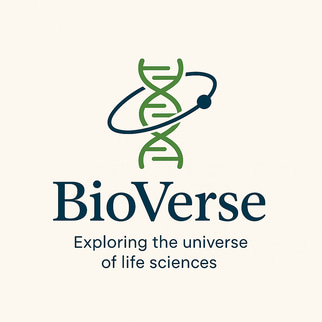CRISPR Explained: How This Tiny Tool Is Rewriting the Code of Life
7/5/20253 min ler


In recent years, one term has been making waves in the world of biology and beyond: CRISPR. If you’ve ever wondered how scientists might one day cure genetic diseases, design disease-resistant crops, or even alter the DNA of living organisms, CRISPR is at the center of it all. But what exactly is CRISPR, and why is it being called one of the most revolutionary tools in modern science?
In this article, we’ll explore how CRISPR works, why it matters, and what it could mean for the future of life on Earth.
🔬 What Is CRISPR?
CRISPR stands for Clustered Regularly Interspaced Short Palindromic Repeats—a mouthful, but essentially, it refers to a natural defense system found in bacteria. These tiny organisms use CRISPR sequences to detect and destroy viruses by storing snippets of viral DNA and using them as a molecular "wanted poster."
Scientists discovered that this bacterial immune system could be repurposed as a precise gene-editing tool. Using a specialized protein called Cas9, researchers can cut DNA at specific points and either remove, replace, or add genetic material. Think of it as a pair of molecular scissors guided by a GPS system built from RNA.
🧬 How CRISPR Works: A Simple Breakdown
To edit genes using CRISPR-Cas9, scientists follow a relatively simple process:
Guide RNA (gRNA) is designed to match the target DNA sequence.
The gRNA is combined with Cas9, the protein that acts as scissors.
Once inside the cell, the gRNA guides Cas9 to the exact spot in the DNA.
Cas9 cuts the DNA at that location.
The cell then attempts to repair the break—scientists can harness this repair process to alter the gene.
This method is faster, cheaper, and more accurate than previous gene-editing technologies, which is why it’s been hailed as a breakthrough.
🌱 Real-World Applications of CRISPR
CRISPR is already being used in labs around the world, and the potential applications are staggering:
Medical Treatments: Scientists are exploring CRISPR to correct genetic mutations that cause diseases like cystic fibrosis, sickle cell anemia, and muscular dystrophy.
Cancer Research: CRISPR is being used to edit immune cells to better target and kill cancer.
Agriculture: Gene-edited crops can be made more resistant to pests, drought, and disease without the use of harmful chemicals.
Animal Health: CRISPR may help prevent inherited diseases in pets and livestock.In 2020, the first CRISPR-based therapy was tested in humans—and the early results are promising.
⚖️ Ethical Concerns and the Future of Gene Editing
With great power comes great responsibility. The idea of editing human embryos or creating “designer babies” raises serious ethical questions. Who decides what traits are acceptable to edit? Could this technology increase inequality or lead to unintended consequences in the genome?
Many countries have placed strict regulations on how CRISPR can be used, especially in humans. As the science advances, the debate over its ethical use will continue to grow.
🧠 Why CRISPR Matters
CRISPR has opened the door to a future where genetic diseases might be cured, food can be grown more sustainably, and biology can be programmed like code. While we are still in the early stages, the potential is massive—and exciting.
Understanding CRISPR doesn’t require a degree in molecular biology. At its core, it’s a tool that allows scientists to edit the code of life with extraordinary precision. And as research progresses, the story of CRISPR is only just beginning.
📌 Key Takeaways
CRISPR is a natural DNA-cutting system found in bacteria, now used by scientists for gene editing.
The CRISPR-Cas9 system allows for targeted DNA modification, making it a powerful tool in genetics.
Applications range from medicine and agriculture to cancer treatment and biotech innovation.
Ethical concerns remain, especially around human gene editing and embryo modification.
CRISPR is changing how we understand and interact with the very fabric of life.
Want to dive deeper into gene editing, synthetic biology, or biotechnology? Stay tuned to BioVerse — the symphony of life, explored through science.
Explore
Discover the wonders of life sciences today.
Learn
Engage
contact@bioversexplore.com
© 2025. All rights reserved.
